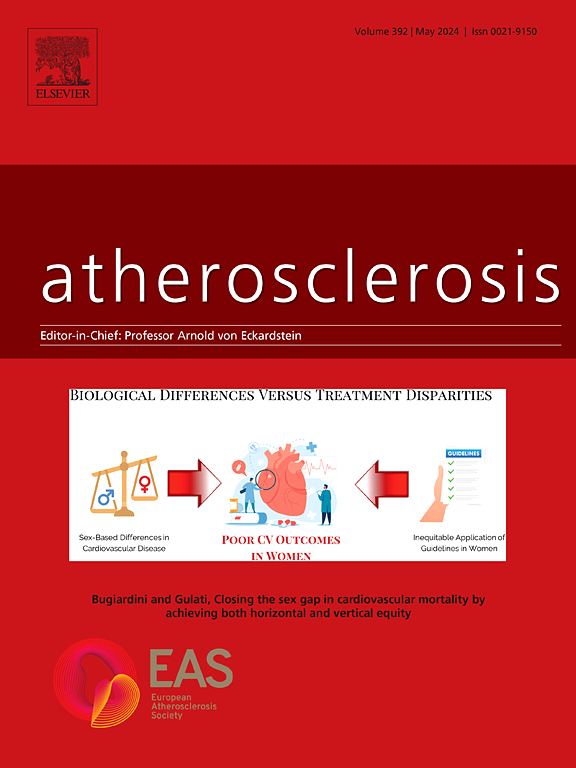Differential lipid impact on mortality in patients undergoing CABG versus PCI
IF 4.9
2区 医学
Q1 CARDIAC & CARDIOVASCULAR SYSTEMS
引用次数: 0
Abstract
Background and aims
The impact of revascularization type, including coronary artery bypass grafting (CABG) and percutaneous coronary intervention (PCI), on lipid control efficacy remains unclear. We aim to assess the associations of lipid levels with all-cause and cardiovascular mortality in patients undergoing PCI or CABG.
Methods
We used data from the ChinaHEART cohort and enrolled patients with a self-reported history of PCI or CABG. We employed Cox proportional hazards regression models to evaluate the associations between lipid levels and mortality.
Results
Our analysis included 29 003 participants, of whom 23 959 (82.6 %) undergoing PCI and 5044 (17.4 %) undergoing CABG. Over a median follow-up of 3.22 years, 1007 deaths were recorded, with 579 attributed to cardiovascular causes. Each 1 mmol/L increase in TC, LDL-C, and non-HDL-C was associated with multivariable-adjusted HRs of 1.16 (95 % CI 1.10,1.22), 1.23 (1.15,1.32) and 1.16 (1.10,1.23) for all-cause mortality, respectively. Similar results were observed in patients undergoing PCI, while no significant associations were found in patients undergoing CABG.
Conclusions
Elevated lipid levels are associated with all-cause and cardiovascular mortality in revascularization patients. Suboptimal lipid control appears to have a more pronounced effect on mortality in patients undergoing PCI. The effects of elevated lipid levels on mortality in CABG patients may need a longer follow-up to manifest due to the more complex nature of the grafts and the long-term adaptation process.

求助全文
约1分钟内获得全文
求助全文
来源期刊

Atherosclerosis
医学-外周血管病
CiteScore
9.80
自引率
3.80%
发文量
1269
审稿时长
36 days
期刊介绍:
Atherosclerosis has an open access mirror journal Atherosclerosis: X, sharing the same aims and scope, editorial team, submission system and rigorous peer review.
Atherosclerosis brings together, from all sources, papers concerned with investigation on atherosclerosis, its risk factors and clinical manifestations. Atherosclerosis covers basic and translational, clinical and population research approaches to arterial and vascular biology and disease, as well as their risk factors including: disturbances of lipid and lipoprotein metabolism, diabetes and hypertension, thrombosis, and inflammation. The Editors are interested in original or review papers dealing with the pathogenesis, environmental, genetic and epigenetic basis, diagnosis or treatment of atherosclerosis and related diseases as well as their risk factors.
 求助内容:
求助内容: 应助结果提醒方式:
应助结果提醒方式:


